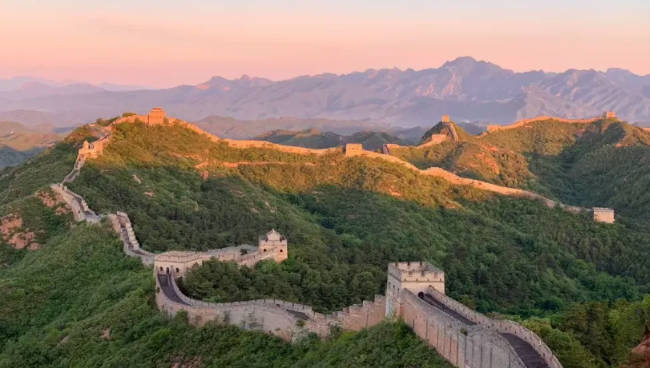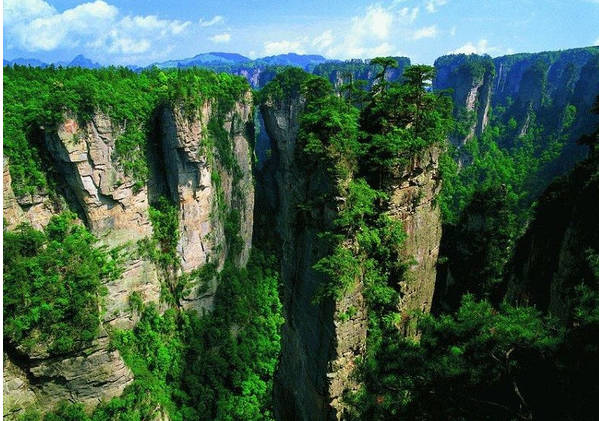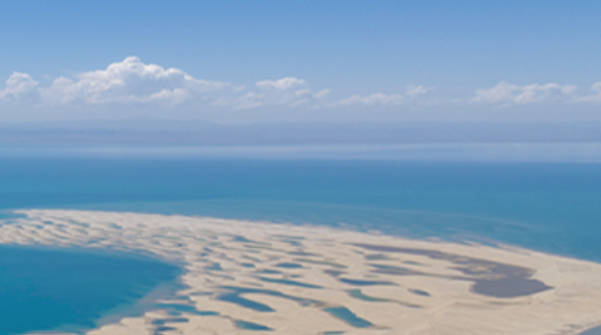Duration: 7 days. Time: February. Cost per person: 5000 yuan. With whom: Spouse. Activities: Cuisine exploration, photography, self-driving, independent travel, train travel, bourgeois lifestyle, gourmet food. Published on 2024-03-08 21:50.

In the company of three, there must be a teacher. When it comes to food and travel, I have always been good at and willing to learn from many sources. Taizhou, ever since I saw my friend’s travel photos, I was deeply attracted to the fairy tale-like colorful small village. The Cinque Terre in Italy has been a place I’ve been looking forward to visiting on my European trip. In recent years, due to various reasons, I haven’t been able to travel far. This Chinese version of Cinque Terre must be squeezed into our couple’s travel plans, surpassing other provinces and cities!
The Spring Festival travel rush, a unique term in China, is something we, living locally, have not experienced. During the eight-day Spring Festival holiday, not wanting to just eat and drink without purpose, we planned a trip to Taizhou to experience the Chinese-style mass migration firsthand! Taizhou is located in the southeast of Zhejiang Province. The high-speed train from Beijing to Taizhou takes nearly eight hours. My husband thought it was too long, so we planned to spend a day in Hangzhou on our way there and a day in Shanghai on our way back.
Hangzhou, we’re back! For us, it holds a special sentiment. The first trip we took after getting to know each other was to Hangzhou. We’ve been there a few more times since, but I need to count them by years when I am calm. The beautiful scenery and delicious food in Hangzhou are the simple and direct reasons we keep choosing it.
To give ourselves more time in Hangzhou, we chose the earliest train. On the train, we registered for a Hangzhou public transport card and took the subway as if we were going home from work. We arrived at the hotel near West Lake and immediately set out to have lunch. The entrance of the Hangzhou restaurant was crowded with people. I quickly squeezed in to get a number, but the receptionist said they had stopped taking numbers. We immediately went to the nearby Zhiwei Restaurant, where we simply ordered soup dumplings, crab soup buns, and wonton, familiar tastes in a familiar environment. It was already two in the afternoon, and the lobby was full of people. Although we didn’t have to stand by someone’s table waiting, we still needed to seriously look for a seat.
After the meal, we went straight to West Lake. This was one of the most spectacular encounters we’ve had with West Lake, in terms of the number of people. A wall of people surrounded West Lake, and without getting close, it was impossible to see the true beauty of West Lake. Good spots for taking photos required queuing, and buying tickets for a boat ride required queuing. It was quite difficult to take a single photo that wasn’t a group photo. We followed the crowd, slowly moving south along the West Lake shore from near the music fountain. Electric carts slowly shuttled through the crowd, each one fully occupied. At the corner, we saw the familiar pavilion that had appeared many times in our West Lake photos. The not-so-wide road along West Lake had become a parking lot, with vehicles slowly moving bit by bit. We were secretly glad that we didn’t偷懒 and chose to walk. Passing by Qianwang Temple, the entrance was a mess of cars and people, and we gave up the impulse to see the plum blossoms and continued on to Liulangyinying. The park was also full of people. The willow branches had not yet sprouted leaves, some were high, some were drooping, and the stream reflected another piece of blue sky. Even the winter scenery was so gentle and beautiful. Walking along the path all the way to West Lake, the boats shuttled across the lake surface, as if all the boats in West Lake had come out, wandering on the lake surface, giving a feeling of a hundred boats competing.
Bicycle sharing is indeed convenient as it doesn’t get stuck in traffic. I rode back to the hotel to rest. Learning from the experience at noon, we set off early. We walked familiarly to Hangzhou Restaurant and successfully got a number. It showed that there were 164 tables waiting in front. Not far away, there was a “Old Man’s Fried Shrimp with Oil”. When we strolled over, it was just a little after five o’clock and they had already stopped giving out numbers. Helplessly, we returned to Hangzhou Restaurant. The entrance was filled with people sitting and standing. I managed to occupy a round stone pier that someone had just left and sat down to wait. From being warmed up by walking andAfter a half-day in Hangzhou, we indulged in a satisfying meal of authentic Hangzhou cuisine. Despite the long waiting time and our hunger, we ordered a plethora of dishes, but fortunately, the portions in Jiangsu and Zhejiang are modest. The taste was pure and proper, and we managed to finish a small table full of dishes. Hangzhou’s beauty is timeless, no matter when you visit.
Since considering a trip to Taizhou, I’ve been more attentive to the city. By chance, I discovered that Taizhou is the main venue for the CCTV New Year’s Eve Gala, and it has been held there for three consecutive years. According to Baidu, on January 1, 2000, the first ray of dawn in the new millennium illuminated Shitang, Wenling, Taizhou on the Chinese mainland first. This place symbolizes light and hope, and choosing to hold the New Year’s Eve Gala here is a way to convey good wishes to the audience nationwide.
For our Taizhou adventure, we planned a route that started with renting a car in Wenling and ended with returning it in Linhai. We aimed for the most optimized route to save time and effort. Our train ticket from Hangzhou to Wenling was a second-class seat converted from a sleeper berth. I was curious about this arrangement in the high-speed rail era. Upon boarding, I found that inside each small door, there were two rows facing each other, with three people sitting in a row. The seats were spacious and comfortable. The train was a slow one, stopping at small stations, and the scenery outside was distinctive—some by fields, others in small towns, with most being three or four-story single-family buildings, some connected, all with a similar layout. The first floor had a wide double door leading to a living room with tables and chairs, while the living areas were on the second floor and above. The small buildings varied only in details like walls and decorations, some低调, some luxurious.
The highlight of our trip was Qicai Xiaoruocun in Shitang Town, Wenling City, an internet-famous spot for its unique architectural style. After picking up the car at Wenling High-speed Railway Station, we headed straight to Xiaoruocun. As we caught a glimpse of the village from a distance, we slowed down, following the traffic diversions. We found a parking space in the lot under the village and were suddenly face-to-face with this colorful little village.
Feeling overwhelmed, we decided to have lunch before exploring the village. We chose a popular small restaurant along the coast, with small round tables outside filled with people and piles of seafood shells, exuding a seaside eatery vibe. Inside, we took a small table and, following the owner’s recommendation, ordered several signature seafood dishes. The steamed small yellow croaker, with its tender meat, was arranged in a circle on a large plate, which we consumed patiently; the red shrimp with its sweet and delicious meat; two flowering crabs, simply stir-fried with ginger and scallions, preserved the crab’s original taste; and a dish of rock garlic fried rice cake, which, since I had tasted in Ningbo, captivated me with its combination of rice cake and seafood flavors. Rock garlic, a sea anemone that grows on reefs and a specialty of Taizhou, has a crispy texture, and when wrapped with seafood soup, the rice cake is fragrant and glutinous, becoming our staple food for the meal. Our first seafood feast in Taizhou was very satisfying.
After the meal, we officially entered Xiaoluo village. The stone-built house exteriors were painted in various colors, arranged in an orderly manner with colors colliding and matching freely. Strolling around, it felt as if one could capture stunning photos from any angle. The colorful steps concentrated the brilliant colors, and walking in the village was like being in a dreamy fairy-tale world. The macaron colors brought joy to both the body and mind. The village, nestled against the mountains and waters, had fishermen’s boats docked by the shore, and between the scattered houses, one could overlook the sea and boats.Here, one could walk freely and at will, with beautiful scenery everywhere. The hanging colorful wish cards formed another beautiful scenery, and I couldn’t help but choose two to take home, write wishes on them, and hang them up. Reluctantly leaving, step by step, and taking many more distant shots of the village, Xiaoluo Village is beautiful from both afar and up close. We returned the same way, and there were more cars entering the village on the opposite side, forming a long convoy that moved slowly, stretching far into the distance.
Originally, we planned to visit the nearby Millennium Dawn Park, which was built to commemorate the first dawn of the new millennium with the epoch-making ‘Millennium Dawn Monument’ and viewing platform. The two opposing monument pillars stand tall, like two vertical door panels, symbolizing that the door to the new century has opened; or to go to Dongxia Beach to bask in the sun and daydream, but these beautiful wishes were discouraged by the holiday enthusiasm, with parking lots starting for several kilometers, which was daunting. We returned to the hotel early to rest.
The hotel was carefully selected by me, with excellent facilities and services, and next to it was a locally famous restaurant. However, the restaurant was too popular to make reservations by phone, did not accept on-site queuing, and, more helplessly, there were no other dining options in the vicinity. After more than two hours, my husband tried various methods, and we finally had dinner, still featuring various Taizhou specialty seafood.
A one-day trip from Wenling to Linhai, both Wenling and Linhai are under the jurisdiction of Taizhou, and scenic spots such as Tiantai Mountain and Xianju are more conveniently accessed from Linhai. Today, we played and moved from Wenling to Linhai.
The first stop on our itinerary was Changyu Dongtian. Changyu Dongtian is part of the remaining Beiyandang Mountain range, with undulating mountains and is an artificial cave landscape. It is said to have 28 cave groups with numerous caves of various shapes. We randomly chose a cave group to visit. The artificial traces were too obvious, and there were not many natural landscapes to appreciate. The ornamental value was not strong; we merely went around for a check-in without taking many photos.
Last night, while planning the itinerary, I saw a cultural activity center in a village on a video where plum blossoms were in full bloom, attracting many people to take photos. It happened to be near our planned route, which perfectly enriched our schedule for the day. Unexpectedly, the cultural center in this village was located on a mountain! People came in droves, and seeing those who were going down the mountain panting, I was already intimidated. I sent my husband ahead to scout, allowing me to take a break and enjoy the scenery vicariously. Without any pressure, we strolled and stopped along the way. A few plum blossoms we encountered en route had already brought me a pleasant surprise. This was my first official encounter with plum blossoms. In Beijing’s spring, peach blossoms bloom everywhere, but I had never intentionally appreciated plum blossoms.
After much internal struggle and several rests, we finally climbed to the top of the mountain and arrived at the Mei Garden. A vast sea of plum blossoms, so beautiful, I couldn’t wait to rest and hurried into the plum blossom thicket to take photos. In winter, the rose-red plum blossoms appear even more enchanting. Little bees flitted among the flowers, and almost every plum tree had their presence, making me somewhat apprehensive and tense, forgetting to smell the fragrance of the plum blossoms up close. Today’s sky was generous, with blue skies, white clouds, distant mountains, and a sea of plum blossoms, a beautiful winter scene. Although the climb was hard, seeing such beautiful scenery made it feel worthwhile. This place is not only a cultural center but also a sports training center! Changyu Dongtian was a bit disappointing, but Mei Garden made up for it well and brought unexpected surprises.
After finishing the morning’s itinerary, we went directly to the hotel in Linhai, settled our luggage, and around two o’clock, we went to have lunch. Both the hotel’s restaurant and the street-side eateries were closed; the local restaurants usually stop serving lunch at two o’clock and won’t receive guests even if they come, that’s how capricious they are. We had no choice but to buy some bread and milk at a convenience store to make do.
After a comfortable nap, we set out again for the ancient city wall and Ziyang Street. Taizhou Prefecture City Wall, originally built during the Eastern Jin Dynasty, has both military and flood control functions and is known as the ‘Great Wall of Jiangnan.’ When we arrived, it was already in the evening, and we could ascend the wall without buying tickets. The thick city wall, with its green bricks, exudes a sense of history, andClimbing the wall, we were rewarded with a breathtaking view of the distant mountains and a panoramic vista of Ziyang Street. The bustling crowds and thriving shops evoked the spirit of the famous painting ‘Along the River During the Qingming Festival.’ Ziyang Street, Linhai’s first ancient street, stretches for about a kilometer, adorned with lanterns, red lanterns, red silk ribbons, and silk flowers, creating a festive atmosphere. The alleys are abuzz with life, lined with shops and stalls selling handicrafts and specialty snacks, surrounded by a sea of people, making our progress slow and deliberate. After a day of exploration, we decided it was time for a proper meal.
Leaving Ziyang Street, we stumbled upon a steamed fish pot restaurant. The fish soup was a symphony of freshness, and the tender, smooth fish meat was a delightful surprise. However, upon our return to the hotel area after dinner, we found that fruit stalls, restaurants, and other shops had closed for the night. It seems that in Taizhou, dining must be done promptly, as establishments cease operations after eight in the evening.
Our two-day itinerary in Linhai included natural wonders like the Tiantai Mountain Waterfall and Ji Gong’s Former Residence. Tiantai Mountain, the starting point of the travel notes by the Ming Dynasty geographer Xu Xiake, is a birthplace of both the Tiantai School of Buddhism and the Southern School of Taoism. It has been a source of inspiration for many poets, leading to the saying, ‘One Tiantai Mountain, half of Tang poetry.’ Li Bai’s verse, ‘Refusing to dwell in dragon towers and phoenix palaces, I soar straight to Tiantai,’ further cemented its reputation. Our focus was the Tiantai Mountain Waterfall, the most dramatic in terms of height and width in the country. From the base, the cascading waterfall exuded a sense of grandeur. As we climbed the valley, our perspective shifted, revealing different aspects of the waterfall with each step. My goal was to reach the Water Curtain Cave, where the splashing water droplets and the close proximity to the waterfall made for an exhilarating experience, fulfilling a long-held wish.
After our waterfall adventure, we learned from the previous day and decided to dine early to avoid missing the dinner rush. A restaurant recommended by a friend was our next stop, but upon arriving at 11:10, we were disappointed to find they were no longer taking reservations. We settled for a nearby restaurant that offered Taizhou specialties, including steamed hairtail fish and red shrimp, both of which were delightful.
The afternoon brought a visit to Ji Gong’s Former Residence, the birthplace of the living Buddha Ji Gong and the ancestral home of the Li family. The halls, Buddhist altars, pavilions, and furnishings vividly recreated the living conditions of the Li family during the Southern Song Dynasty. The park’s pavilions and towers were exquisite, the lake water rippled gently, and the statue of Ji Gong was lifelike, making it a beautiful area to explore.
We had hoped to visit the thousand-year-old Guoqing Temple to see the Sui Dynasty plum blossoms in bloom, but the holiday traffic made navigation impossible. With the road ahead filled with enthusiastic visitors and the traffic police directing us to park kilometers away, we decided to forgo the visit, choosing instead to return to the hotel for a rest before heading out for dinner.Xinrongji was too luxurious, and Rong Xiaoguan was more people-friendly. There happened to be one nearby. We cycled over and arrived a little after four. Only to find the entrance crowded with people. The waiting seats were all occupied. I quickly made my way to the number-issuing desk set up at the entrance, only to be informed that the numbers had already stopped being issued. As I stood there, somewhat dazed, wondering where to find another well-regarded place to eat, a young man approached with two numbers, telling the serving girl that someone had given him a number and he didn’t need his own. I immediately said: ‘Give that one to me!’ And so, I obtained a waiting number. I couldn’t help but feel fortunate, as it truly wasn’t easy to secure dinner. Thus, I sat on the chair by the entrance, watching newcomers arrive one after another, only to be told they couldn’t get a number and leave disappointed. The serving girl was truly in a tough spot, standing there gently repeating the same message. After more than three hours, it was finally our turn. It set a new record for our waiting time for a meal. Once seated and settled, we inquired with the waiter and learned that the queue for dinner numbers would start forming even before lunch ended each day. Therefore, arriving at four was simply too late to get a number for dinner. The wait for this dinner was arduous, but we followed the menu’s top ten signature dishes, ordering Clam Garlic Stir-fried Glass Noodles, Beef Short Ribs, and Home-cooked Deep Sea Yellow Croaker, which is said to be from DaChen Island! We had watched a documentary about DaChen Island in Taizhou at home, and my husband was keen on visiting, but I was reluctant to take a boat trip, so this Yellow Croaker from DaChen Island would have to serve as a consolation. The meat was incredibly tender; I greedily tried to pick up a large piece, but it fell apart on the plate, requiring the use of a spoon. The Clam Garlic Stir-fried Glass Noodles featured sea anemones that grow in sand and glass noodles, which were delicious and a signature dish of Rong’s Restaurant. The Beef Short Ribs were also tasty, with the beef being neither too tough nor too chewy. Overall, the three-hour wait for this dinner was worth it. Visiting Taizhou, one should always have an intimate encounter with a local restaurant, and the taste here is indeed excellent.
The first image of Taizhou that I saw was of the Ruyi Bridge at Xianxianju. The overall shape resembles a Chinese jade Ruyi, spanning between two high mountains with an abyss below. Viewing the bridge from a distance offers a strong visual impact. For today’s trip to Xianxianju, we chose to enter from the south gate and take the cable car. Once again, we experienced the holiday fervor, queuing in circles for an hour before finally reaching the mid-level of the mountain. Fortunately, there were two long escalators that helped us climb to the peak, saving us a lot of energy. From afar, we saw the Ruyi Bridge, which is part of the northern peak and seemed so far away! In pursuit of the beautiful scenery, we chose to descend from the north, walking and enjoying the mountain views along the way. The mountain path was not very strenuous, with more flat ground, which I liked. Among the quiet valleys, there were strange peaks and rocks shrouded in mist. Every mountain, water, stone, and peak here could stand alone and yet complement each other, showcasing the extraordinary craftsmanship of nature and the beauty bestowed by heaven. The Lotus Platform, resembling a blooming lotus, is a viewing platform that extends from the high peak into the deep valley and is a must-visit spot for tourists to queue up and take photos. We raised our selfie sticks and captured a scenic photo without joining the queue. There are several glass-bottom observation decks extending out of the valley, which are very attractive. Tourists can walk onto the observation decks and experience the charm of nature from a different angle. The Wolong Bridge lies like a giant dragon winding and crouching between the valleys. With its hollow design and the colorful walking path on the bridge, it is a place where tourists rush to take pictures. After nearly three hours, we finally arrived at the Ruyi Bridge. With its two-layer line design and glass deck, it is full of modernity. Unfortunately, when we get close, we can’t see the panoramic view of the bridge. Standing on the bridge and watching the clouds float around, the sea of clouds is like a dream and illusion, intoxicating. The elegant clouds, the blue sky, and the layered peaks set off each other. Amidst the changing clouds and winds, an aura of immortality lingers, as if one is in a fairyland. Sincerely sighingWe had a good meal. Combining lunch and dinner, we must eat until we are full.
Seeing Shanghai again. A few months ago, I was still sighing that it had been nearly twenty years since I parted with Shanghai. This time, just a few months later, I am in Shanghai again. Choosing Shanghai as the transit place for our return journey, although I have just been here, I am still looking forward to it.
I still chose the Metropolo Jinjiang Hotel, which is a neighbor of the Peace Hotel where I stayed last time. As soon as I go out, I can see the Oriental Pearl TV Tower. We arrived at noon and had to line up in long queues to take the subway. Not far from getting out of the subway is the hotel. After putting down our luggage, we immediately set off to explore and eat.
The weather is fine. The blue sky sets off the modern landscapes such as the Oriental Pearl and the Lujiazui skyscrapers with a few more touches of softness. Walking southward along the Bund, we came to Yuyuan Shopping Mall. When I came here four months ago, Yuyuan Shopping Mall could be entered freely. The mall is very large and there are many shops inside. Only entering Yuyuan Garden and the City God Temple requires separate tickets. This time it is just the Spring Festival. There is a lantern festival inside. The entire shopping mall is surrounded. As long as you enter the shopping mall, you need to buy an 80-yuan ticket. As the saying goes, since we are already here! The next encounter is not known how many years later. We bought tickets and entered the shopping mall. First, we found a restaurant and solved our lunch. We ordered a portion of crab noodles, small steamed buns, wontons, and crab roe soup dumplings to taste. They are all staple foods and we were soon full.
Wandering around in the shopping mall, the ponds on both sides of the Nine-Twisting Bridge are filled with large lanterns. The vacant spaces in front of the shops are also grandly decorated. The entire shopping mall is decorated with colorful lanterns and has a strong festival atmosphere. After walking around the shopping mall without entering Yuyuan Garden and the City God Temple, we rode bicycles back to the hotel to rest. For dinner, we are going to have a proper feast. After having eaten seafood for several meals, our stomachs will feel empty. Still, Jiangsu and Zhejiang cuisines are delicious. Between Laotou Youbao Shrimp and Gui Man Long, we chose Gui Man Long with a shorter waiting time. We have already been impressed by waiting in line for meals in Taizhou. Youbao shrimp, stir-fried crab with rice cakes, and Yangzhou dried shredded tofu are all very delicious.
After the meal, we officially walked into Nanjing Road and felt the prosperity of the first pedestrian street. In the MM’s Chocolate World, as soon as we entered, we were attracted by various chocolate products and chocolate beans of various colors. Especially the chocolate beans, with rich colors and the self-service way, attract many children and adults, making people have a strong urge to shop. We observed the crowd queuing for checkout and decided against joining them. Instead, we followed the throng all the way to the Bund, evoking a sense of a grand parade. The Oriental Pearl Tower periodically changed colors, and as far as the eye could see, the entire opposite shore was twinkling with lights. On this side, the buildings adorned with lights shed their solemn attire, adding a touch of softness compared to the daytime.
The next day, we arrived at the Bund early. Today was the day to head home, so we came to bid farewell to the Bund and the great city of Shanghai. The sky was overcast, with many clouds, and hardly any human figures were visible, contrasting sharply with the bustling noise of the previous night. We casually sought angles and took many more photos. Upon reaching the Waibaidu Bridge, my husband even walked to the middle of the road to take a photo from a frontal perspective. The photos with layered clouds had a lot of artistic conception. A must-try: the Dahu Chun Sheng Jian Bao. In just a few months, the menu had changed; the classic fresh meat Sheng Jian was no longer available! Only the shrimp and crab powder ones remained, so we ordered one of each and packed two more to go, resolving our dinner. However, this time, it truly did not feel as good as the last, with the crust not being as crispy and somewhat soft.
After a four-hour high-speed train ride, we were home. The vacation came to a perfect end, and not a day was wasted of my precious annual leave; back to work tomorrow. February 2024.









